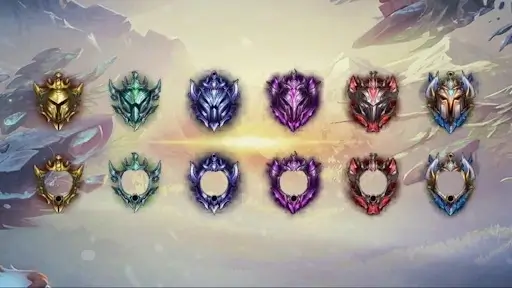League of Legends Guide to Ranking System
League of Legends is Riot Games’ iconic MOBA, and it has a competitive ranked mode, in which you can play high stakes to climb a rank ladder to play against people of the same skill as you. The ranks are from Iron to Challenger, and they measure your skills through divisions and LP. This all is controlled by a hidden MMR. If you’re new, and are trying to get a quick start, you should buy LoL account which already have good ranks, or champions. This guide details the ranking system well enough for you to understand how to rank up easily.

Overview of the Ranking System
To enter ranked, you need to reach level 30 and have at least 20 champions. This makes sure you are familiar with the game. It supports queues of sizes 1, 2, 3, or 5 players. The ranking runs on seasons- which last roughly a year. These seasons are divides in roughly 3 equal parts, with a soft rank reset at the end of each part- and a full reset at the start of each season. We have also covered Outdoor Furniture Options in Brisbane on our website.
Tiers and Divisions: The Ladder Explained
Each rank shows a skill bracket, with many distinct characteristics:
- Iron: This rank is for the new players. People here are generally still new to the basics, positioning, and don’t know too many strategies. You should focus on the fundamentals when trying to get out of this one.
- Bronze: Slightly better than iron, but almost the same. It’s full of casual players.
- Silver: This is the most populated rank. Most of the people end up here. This rank shows you know the basics and some strategies, but you don’t know how to make big plays.
- Gold: It’s a milestone showing that you know the mechanics and decent decision making. Here is when you should buy LoL skins since they add an extra flair and make you feel like a badass when playing.
- Platinum: It is for the players outside of the average mark. Getting here shows that you know how to make big plays.
- Emerald: It’s a bridge between Platinum and Diamond.
- Diamond: Has some of the most skilled players. It shows off the fact that you know what you’re doing.
- Master: Full of elite players, competing for the leaderboards. You need consistent performance to stay in this.
- Grandmaster: It is the last step towards Challenger.
- Challenger: It is the highest rank, limited to the top 300 players per region.
Placement Matches and MMR
To get your rank, you must play 5 placement matches. These matches determine your initial rank based on your win-loss ratio, and performance. Your placements aren’t affected by LP, but rather MMR which is a hidden Matchmaking Rating based fully on skill and performance.
LP: High MMR (above your rank’s average) gets you more LP for each win, and lesser for each loss. Lower MMR does the opposite.
Matchmaking: You’re paired with players which have a similar MMR- independent of LP and rank.
Climb Speed: Higher your MMR, gets you larger LP gains- boosting rank-ups. Find valuable tips and strategies in our article about Create a Fair Workplace for Your Employees.
Progression Mechanics: Climbing and Falling
Wins: They get you about 15 LP. However, this amount depends on your MMR and opponent strength.
Losses: Deducts about 15 LP. Also dependent on your MMR and opponent strength.
Promotion: By reaching 100 LP in a division to promote into the next one.
Demotion: Hitting 0 LP and then losing another match demotes you to the last division.
Dodging is when you leave champion selection. It penalises you with a -3 LP and a timered queue ban. These values increase further for repetitive ones within the same day. Dodging preserves your MMR, but reduces your LP. Enhance your understanding by reading our in-depth post on Suspension Is the Backbone 4WD.
Conclusion
The ranking system in League of Legends is a hard, high stakes ladder which heavily tests your skill, mechanics, strategy, and resilience across all the ranks- getting tougher each time. Starting from Iron for the basics, to Challenger for the top players. Climbing the ranks demands you to consistently win, pick your champions smartly, and optimise your MMR. With a new season, 3 splits, this is the time for you to queue up and master your skills against the real grind. You can visit Fintechzoom.com for more trending posts.




